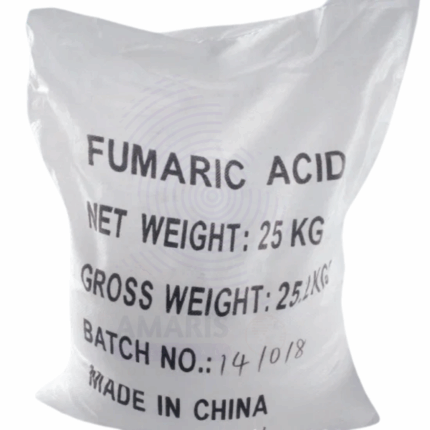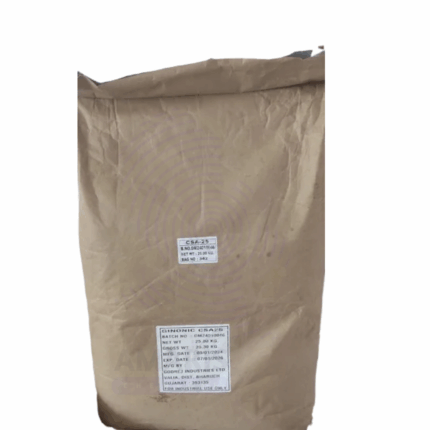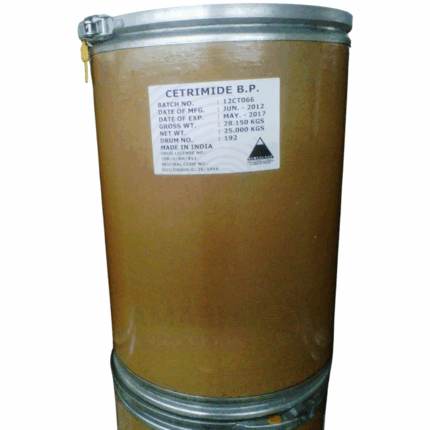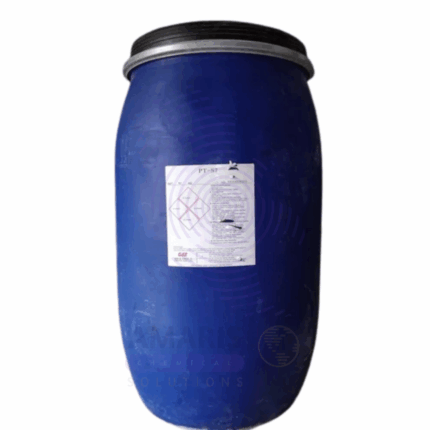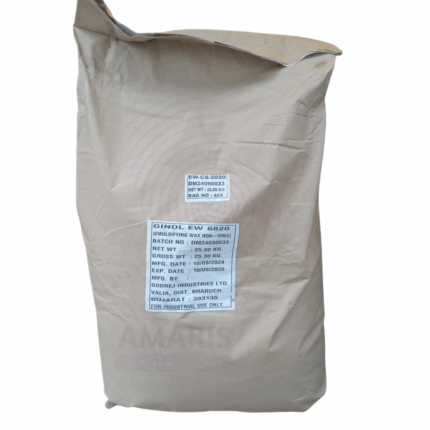Galaxy CAPB
Whatsapp Order
Galaxy CAPB is a high-performance amphoteric surfactant based on Cocamidopropyl Betaine, produced from coconut fatty acids. It appears as a translucent to pale yellow liquid with mild viscosity and a mild coconut-like odor. As a zwitterionic surfactant, it provides exceptional foaming, mildness, and synergistic compatibility with other surfactants, making it ideal for personal care, household, and industrial formulations.
Description
Table of Contents
Toggle
Galaxy CAPB
Primary Uses
- Personal Care & Cosmetics
- Acts as a mild foaming and lathering agent in shampoos, body washes, facial cleansers, and bubble baths.
- Enhances viscosity and texture while boosting mildness in sulfate-containing and sulfate-free systems.
- Incorporated into baby care and sensitive-skin products due to its gentle nature.
- Used in liquid soaps, hand washes, and shaving gels as a secondary surfactant to reduce irritation.
- Household Cleaning Products
- Functions as a co-surfactant in dishwashing liquids, multipurpose cleaners, and laundry detergents to improve sudsing and cleaning performance.
- Helps reduce harshness of primary surfactants and improves product rinsability.
- Compatible with bleach in non-oxidizing household cleaner formulations.
- Industrial & Institutional Cleaners
- Used in foam control and grease-cutting cleaners in automotive, floor maintenance, and entry-mat pre-sprays.
- Serves as a stabilizer in foam-based fire-fighting formulations.
- Pet Care
- Included in mild pet shampoos and grooming products to provide gentle cleansing and safe formulation for animal skin and coat.
Secondary Uses
- Cosmetic Emulsions & Lotions
- Helps stabilize oil/water emulsions in creams, lotions, sunscreens, and makeup removers.
- Enhances sensory feel and spreadability.
- Industrial and Textile Applications
- Functions as a wetting agent and foam stabilizer in textile processing, dyeing, and finishing.
- Used in some industrial metal cleaning and degreasing applications.
- Agricultural & Veterinary Formulations
- Serves as a wetting/spreading agent in pesticide sprays and veterinary wash solutions.
PRODUCT KEY FEATURES
- Basic Identification Attributes
- Chemical Name (IUPAC): Cocamidopropyl Betaine
- Common/Trade Name: CAPB, Galaxy CAPB
- CAS Number: 61789-40-0
- HS Code: 3402.20.90
- Molecular Formula: C₁₉H₃₈N₂O₃
- Synonyms:
- CAPB
- Cocamidopropylbetain
- Cocamidopropylamine Oxide Derivative
- Physical & Chemical Properties
- Appearance: Clear to pale yellow liquid (can be slightly hazy)
- Odor: Mild coconut-like
- pH (1 % aqueous): Approx. 5.0–7.0 (mildly acidic to neutral)
- Viscosity: Low to moderate (1,000–5,000 cP depending on dilution)
- Solubility: Completely miscible with water
- Stability: Stable in typical personal-care pH range (4–8); may degrade under strong acidic or alkaline extremes
- Foaming Ability: High in both hard and soft water
- Safety & Hazard Attributes
- Hazard Class (GHS):
- Eye Irritant, Category 2A
- Skin Irritant, Category 3 (mild irritant)
- Toxicity: Low in dermal and oral exposures
- Allergenicity: Generally mild, but trace impurities (e.g., amidoamines, fatty acids) can cause sensitivity in some individuals; use high-purity grades to minimize risk.
- Storage & Handling Attributes
- Storage Conditions: Store in cool (10–30 °C), dry, ventilated areas; avoid freezing and direct sunlight.
- Container Type: LDPE/HDPE drums, IBCs, or boxed tote containers.
- Shelf Life: 12–24 months when stored properly.
- Handling Precautions: Use basic PPE (gloves, goggles); ensure containers are sealed and stored on spill pallets to prevent leakage.
- Regulatory & Compliance Attributes
- Listed on major chemical inventories (TSCA, REACH, AICS).
- Cosmetic-grade formulations often meet IFRA and RIFM purity guidelines.
- Acceptable for rinse-off and leave-on personal-care products; regulated under EU Cosmetics Regulation (EC) No 1223/2009, FDA (US), and other regions.
- Environmental & Health Impact
- Ecotoxicity: Low to moderate; biodegradable under aerobic conditions.
- Bioaccumulation: None expected due to high water solubility and degradation.
- Carcinogenicity/Mutagenicity: Not classified.
- Environmental Fate: Rapid degradation in wastewater treatment; low persistence.
SAFETY HANDLING PRECAUTIONS
- Safety Handling Precautions
PPE Required:
- Nitrile or chemical-resistant gloves
- Safety goggles or face shield
- Protective clothing (e.g., apron) for bulk handling
Handling Guidelines:
- Avoid contact with eyes and prolonged skin exposure.
- In case of spills, contain and dilute with water; mop or absorb and rinse thoroughly.
- Ventilate area during transfers; dust/deaggregate only when product is dehydrated or half-solid.
Storage Measures:
- Keep containers sealed and upright.
- Store away from oxidizers and strong acids.
- Use first-in-first-out (FIFO) to ensure freshness and potency.
Hygiene Practices:
- Wash hands and exposed skin after handling.
- Avoid eating or smoking in product handling areas.
- Rinse equipment with water before maintenance.
- First Aid Measures
- Inhalation: Not expected to cause respiratory issues; if mist is inhaled, move to fresh air and monitor.
- Skin Contact: Rinse affected area with water; if irritation persists, seek medical advice.
- Eye Contact: Rinse with plenty of water for at least 15 minutes and consult a doctor.
- Ingestion: Rinse mouth, drink water, and seek medical attention if symptoms occur.
- Firefighting Measures
- Fire Hazards: Non-flammable; product will not ignite.
- Extinguishing Media: Use media for adjacent fires—water spray, foam, dry chemical, or CO₂.
- Special Precautions: Wear standard firefighting gear and self-contained breathing apparatus if fire involves other flammable materials.
- Decomposition Products: May emit carbon oxides, nitrogen oxides under fire conditions.
Related products
Ceteareth 25 Ginonic
Ceteareth 25 Ginonic CSA 25 is a nonionic surfactant and emulsifier derived from the ethoxylation of cetearyl alcohol, incorporating approximately 20 ethylene oxide units per molecule. It appears as a white to off-white waxy solid or viscous liquid, depending on temperature and formulation. This emulsifier is widely used in cosmetic, pharmaceutical, and industrial formulations for its excellent ability to stabilize oil-in-water emulsions, improve texture, and enhance the sensory properties of finished products. Its high hydrophilic-lipophilic balance (HLB) makes it especially effective in forming stable emulsions and solubilizing lipophilic ingredients in aqueous phases. Ceteareth 20 is valued for its mildness, broad compatibility, and multifunctional performance.
Cetrimide Powder
Cetrimide Powder is a high-purity quaternary ammonium compound widely used for its antiseptic, disinfectant, and surfactant properties. It is a cationic surfactant derived from cetyltrimethylammonium bromide and appears as a white to off-white crystalline powder with a slight characteristic odor. Known for its excellent antimicrobial efficacy against bacteria and fungi, cetrimide is frequently incorporated in pharmaceutical, personal care, and industrial formulations. It acts as a bactericidal agent, detergent, and emulsifier, providing effective cleaning and disinfecting action.
Cocamino Propyl Betaine Desmocol
Cocamino Propyl Betaine Desmocol is a mild amphoteric surfactant derived from coconut oil fatty acids and amino acids. It appears as a clear to slightly hazy liquid with a faint coconut-like odor. CAPB is widely used in personal care and household cleaning products for its excellent foaming, cleansing, and conditioning properties. Being a zwitterionic surfactant, it is compatible with anionic, cationic, and nonionic surfactants, enhancing the mildness and stability of formulations. The 30% active solution is easy to handle and incorporate in various cosmetic and detergent products. It functions as a foam booster, viscosity builder, and anti-irritant agent, making it a versatile ingredient in mild formulations.
Emulsifying Wax Non ionic
Emulsifying Wax Non ionic is a self-emulsifying, non-ionic wax blend composed primarily of fatty alcohols (typically cetostearyl alcohol or stearyl alcohol) and non-ionic surfactants like polyethylene glycol (PEG) derivatives. It is used to stabilize oil-in-water (O/W) emulsions without relying on ionic charges, making it highly compatible with a wide range of ingredients, including both cationic and anionic components. This wax is commonly found in white, odorless solid flakes or pellets and is dispersible in hot water to form smooth, stable emulsions. It is widely used in cosmetic, pharmaceutical, and industrial applications where gentle emulsification, stability, and broad pH compatibility are needed.
Fatty Acid
Fatty acids are a group of carboxylic acids consisting of long aliphatic chains, which can be either saturated or unsaturated. They are typically derived from natural fats and oils through hydrolysis or saponification and appear as colorless to pale yellow liquids or solids depending on the chain length and degree of saturation. Fatty acids are fundamental building blocks in biochemistry and industrial chemistry, serving as raw materials in the manufacture of soaps, detergents, lubricants, cosmetics, plastics, and food additives. Their amphiphilic nature—containing both hydrophilic (carboxyl group) and hydrophobic (alkyl chain) components—makes them versatile for various chemical and industrial applications.
Mono Ethanol Amine
Mono Ethanol Amine (MEA) is a clear, colorless, hygroscopic liquid with an ammonia-like odor. It is an organic chemical compound combining both amine and alcohol functional groups. MEA is widely used as a versatile chemical intermediate and is especially important in gas treatment, detergents, and chemical manufacturing due to its alkalinity and solubility in water and organic solvents.
Triethanolamine
Triethanolamine (TEA) is a viscous, colorless to pale yellow liquid with a mild ammonia-like odor. It is a multifunctional organic compound widely used in cosmetics, pharmaceuticals, and industrial applications as a pH adjuster, emulsifier, surfactant, and corrosion inhibitor. Triethanolamine neutralizes fatty acids to form soaps and helps stabilize emulsions, making it essential in personal care formulations and various chemical manufacturing processes. Its versatility and compatibility with other ingredients make it a valuable additive in numerous industries.
Tween 60 (Polysorbate 60)
Tween 60, or Polysorbate 60, is a non-ionic surfactant and emulsifier synthesized from sorbitan monostearate and ethylene oxide. It is part of the polysorbate family and is used to stabilize oil-in-water emulsions in food, pharmaceuticals, and personal care products. It appears as a yellowish, viscous liquid or waxy paste at room temperature. Known for its high Hydrophilic-Lipophilic Balance (HLB), Tween 60 is ideal for solubilizing fats, oils, and vitamins in aqueous solutions and enhancing product texture and shelf life.


 Preservatives(food)
Preservatives(food) Flavor Enhancers
Flavor Enhancers Acidulants
Acidulants Sweeteners
Sweeteners Antioxidants
Antioxidants Colorants(food)
Colorants(food) Nutraceutical Ingredients (food)
Nutraceutical Ingredients (food) Nutrient Supplements
Nutrient Supplements Emulsifiers
Emulsifiers
 Collectors
Collectors Dust Suppressants
Dust Suppressants Explosives and Blasting Agents
Explosives and Blasting Agents Flocculants and Coagulants
Flocculants and Coagulants Frothers
Frothers Leaching Agents
Leaching Agents pH Modifiers
pH Modifiers Precious Metal Extraction Agents
Precious Metal Extraction Agents
 Antioxidants(plastic)
Antioxidants(plastic) Colorants (Pigments, Dyes)
Colorants (Pigments, Dyes) Fillers and Reinforcements
Fillers and Reinforcements Flame Retardants
Flame Retardants Monomers
Monomers Plasticizers
Plasticizers Polymerization Initiators
Polymerization Initiators Stabilizers (UV, Heat)
Stabilizers (UV, Heat)
 Antifoaming Agents
Antifoaming Agents Chelating Agents
Chelating Agents Coagulants and Flocculants
Coagulants and Flocculants Corrosion Inhibitors
Corrosion Inhibitors Disinfectants and Biocides
Disinfectants and Biocides Oxidizing Agents
Oxidizing Agents pH Adjusters
pH Adjusters Scale Inhibitors( water)
Scale Inhibitors( water)
 Antioxidants(cosmetic)
Antioxidants(cosmetic) Emollients
Emollients Fragrances and Essential Oils
Fragrances and Essential Oils Humectants
Humectants Preservatives
Preservatives Surfactants(cosmetic)
Surfactants(cosmetic) Thickeners
Thickeners UV Filters
UV Filters
 Fertilizers
Fertilizers Soil Conditioners
Soil Conditioners Plant Growth Regulators
Plant Growth Regulators Animal Feed Additives
Animal Feed Additives Biostimulants
Biostimulants Pesticides (Herbicides, Insecticides, Fungicides)
Pesticides (Herbicides, Insecticides, Fungicides)
 Active Pharmaceutical Ingredients (APIs)
Active Pharmaceutical Ingredients (APIs) Excipients
Excipients Solvents(pharmaceutical)
Solvents(pharmaceutical) Antibiotics
Antibiotics Antiseptics and Disinfectants
Antiseptics and Disinfectants Vaccine Adjuvants
Vaccine Adjuvants Nutraceutical Ingredients (pharmaceutical)
Nutraceutical Ingredients (pharmaceutical) Analgesics & Antipyretics
Analgesics & Antipyretics
 Analytical Reagents
Analytical Reagents Solvents(lab)
Solvents(lab) Chromatography Chemicals
Chromatography Chemicals Spectroscopy Reagents
Spectroscopy Reagents microbiology-and-cell-culture-reagents
microbiology-and-cell-culture-reagents Molecular Biology Reagents
Molecular Biology Reagents Biochemical Reagents
Biochemical Reagents Inorganic and Organic Standards
Inorganic and Organic Standards Laboratory Safety Chemicals
Laboratory Safety Chemicals Specialty Laboratory Chemicals(Special Laboratory Equipment)
Specialty Laboratory Chemicals(Special Laboratory Equipment)
 Demulsifiers
Demulsifiers Hydraulic Fracturing Fluids
Hydraulic Fracturing Fluids Scale Inhibitors(oil)
Scale Inhibitors(oil) Surfactants(oil)
Surfactants(oil) Drilling Fluids
Drilling Fluids
 Dyes and Pigments
Dyes and Pigments Bleaching Agents
Bleaching Agents Softening Agents
Softening Agents Finishing Agents
Finishing Agents Antistatic Agents
Antistatic Agents
 Admixtures
Admixtures Waterproofing Agents
Waterproofing Agents Sealants and Adhesives
Sealants and Adhesives Curing Compounds
Curing Compounds Concrete Repair Chemicals
Concrete Repair Chemicals Anti-Corrosion Coatings
Anti-Corrosion Coatings
 Surfactants(cleaning)
Surfactants(cleaning) Builders
Builders Enzymes
Enzymes Solvents (Cleaning)
Solvents (Cleaning) Fragrances
Fragrances
 Electronic Chemicals
Electronic Chemicals Catalysts
Catalysts Lubricants
Lubricants Photographic Chemicals
Photographic Chemicals Refrigerants
Refrigerants Automotive chemicals
Automotive chemicals Pyrotechnic Chemicals
Pyrotechnic Chemicals
 Biodegradable Surfactants
Biodegradable Surfactants Bio-based Solvents
Bio-based Solvents Renewable Polymers
Renewable Polymers Carbon Capture Chemicals
Carbon Capture Chemicals Wastewater Treatment Chemicals
Wastewater Treatment Chemicals
 Pigments
Pigments Solvents(paint)
Solvents(paint) Specialty Coatings
Specialty Coatings Binders/Resins
Binders/Resins Additives
Additives Driers
Driers Anti-Corrosion Agents
Anti-Corrosion Agents Functional Coatings
Functional Coatings Application-Specific Coatings
Application-Specific Coatings
 Fresh Herbs
Fresh Herbs Ground Spices
Ground Spices Whole Spices
Whole Spices Spice Blends
Spice Blends Dried Herbs
Dried Herbs
 Leavening Agents
Leavening Agents Dough Conditioners
Dough Conditioners Flour Treatments
Flour Treatments Fat Replacers
Fat Replacers Decoratives
Decoratives Preservatives(baking)
Preservatives(baking)
 Plasticizers & Softeners
Plasticizers & Softeners Reinforcing Agents
Reinforcing Agents Adhesion Promoters
Adhesion Promoters Vulcanizing Agents
Vulcanizing Agents Antidegradants
Antidegradants Blowing Agents
Blowing Agents Fillers & Extenders
Fillers & Extenders Accelerators & Retarders
Accelerators & Retarders
